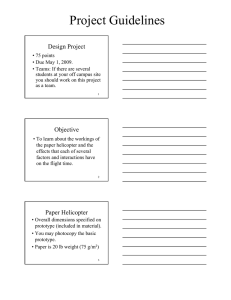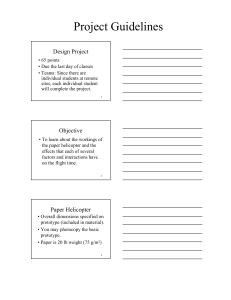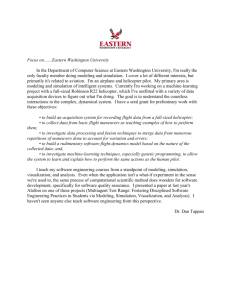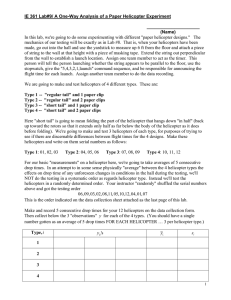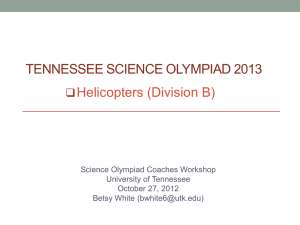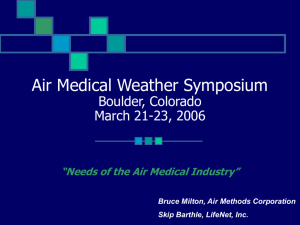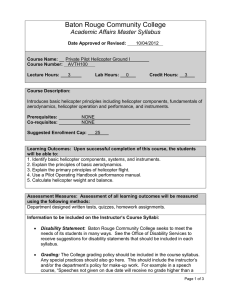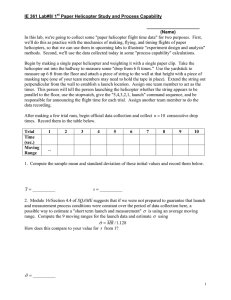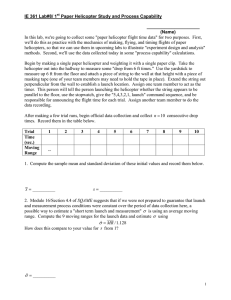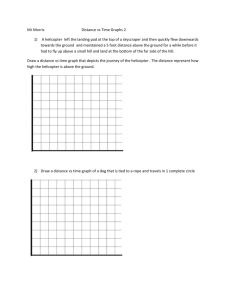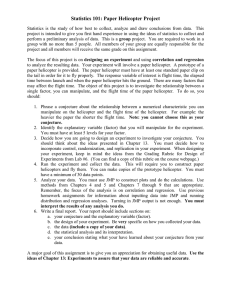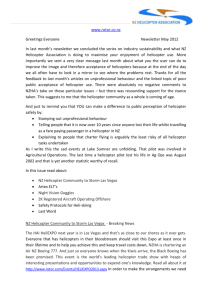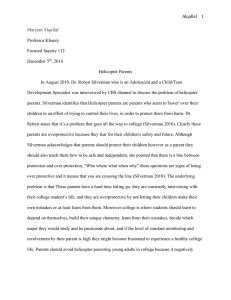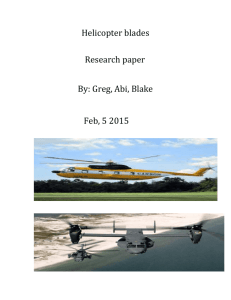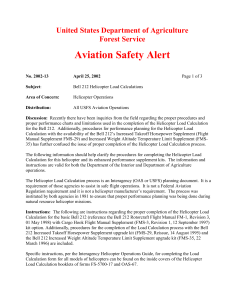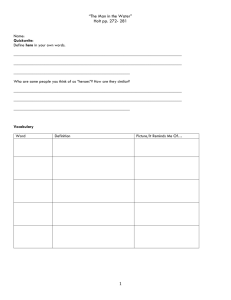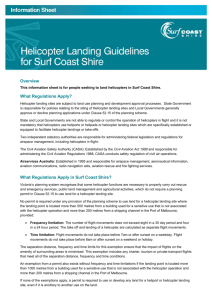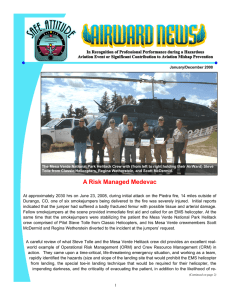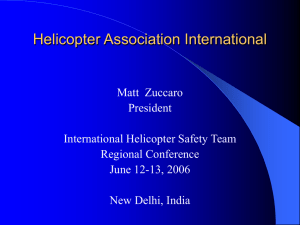Project - Statistics
advertisement
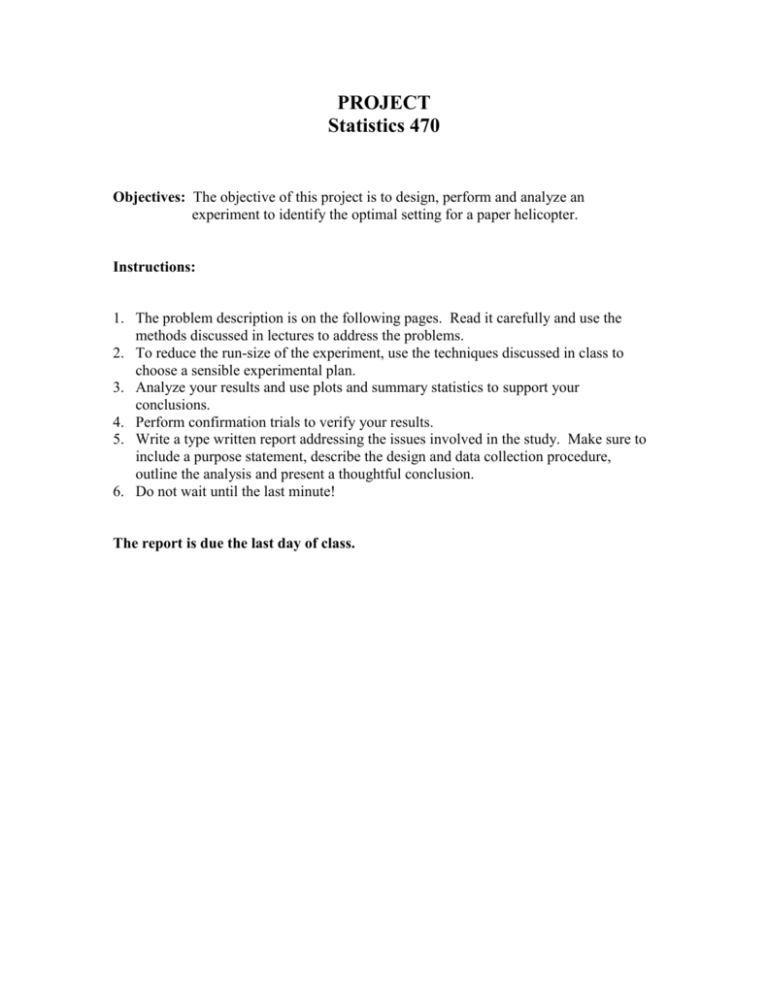
PROJECT Statistics 470 Objectives: The objective of this project is to design, perform and analyze an experiment to identify the optimal setting for a paper helicopter. Instructions: 1. The problem description is on the following pages. Read it carefully and use the methods discussed in lectures to address the problems. 2. To reduce the run-size of the experiment, use the techniques discussed in class to choose a sensible experimental plan. 3. Analyze your results and use plots and summary statistics to support your conclusions. 4. Perform confirmation trials to verify your results. 5. Write a type written report addressing the issues involved in the study. Make sure to include a purpose statement, describe the design and data collection procedure, outline the analysis and present a thoughtful conclusion. 6. Do not wait until the last minute! The report is due the last day of class. Building a Paper Helicopter: Below is the basic design of a paper helicopter. View these as the standard settings. The purpose of the experiment will be to see if minor improvements can be made to the construction so that the hang time can be improved. You will need: Paper that is 27 cm long and 5 cm wide A ruler A paper clip Scisors To make the helicopter, use a ruler to draw the dashed lines and solid lines onto your piece of paper as shown in the pattern. The dashed lines are fold lines, and the solid lines are cutting lines. Cut along the solid lines on your piece of paper. Then, complete the following folding steps. 1. Fold A and B away from you. 2. Fold C toward E, on the dashed line. 3. Fold D so it overlaps C. 4. Fold E in toward the center of your paper. Place the paper clip over the fold at E. Now you are ready to make a test flight. Hold your paper helicopter so that E is toward the ground (how far up?). Let it drop. Make some test flights to make sure that you can record the time to drop. Experiment A paper helicopter enthusiast (DO NOT LAUGH!) would like to perform an experiment to see if minor improvements can be made to the construction of a her favorite paper helicopter so that the hang time can be improved. This will greatly impress her friends! She feels that investigating six factors, each at 2 levels will potentially lead her to an improved design. Four of the factors are simple changes to the helicopter, while the other two are changes are new features (e.g., inclusion of wing flaps and a rotor). Examples of the two design changes are illustrated below. Table of Factors Factor 1. Weight at Bottom 2. Paper Weight 3. Ratio (Arm Length : Arm Width) 4. Ratio (Body Length : Body Width) 5. Wing Flaps 6. Rotor Low Small paper clip Typing paper 8cm: 2.5cm 8cm:1cm none none High Large paper clip Construction paper 12cm : 2.5cm 12cm : (5/3)cm Quarter of arm width 0.25" Instructions: 1. Conduct an experiment to find which factors effect run time. 2. Use as few trials and helicopters as possible. If you do not replicate the experiment, you should justify this decision. 3. Make sure to outline the experimental procedure in detail. The reader should be able to EXACTLY reproduce the experiment from your write-up. 4. Make sure to identify how you decided upon the run order of the experiment (i.e., how were the treatments applied to experimental units). 5. Run a follow-up experiment to verify the conclusions of the experiment. Questions of Interest: 1. What model are you fitting to these data to understand how flight time is effected by the factors? 2. What are the recommended settings for maximum flight time? 3. How can you display your results graphically? 4. Helicopters will be made with a variety of papers in practice. Is it possible to find level settings of the other factors that help reduce the impact of changes in paper type? What are the recommended settings for maximum flight time in this case?

